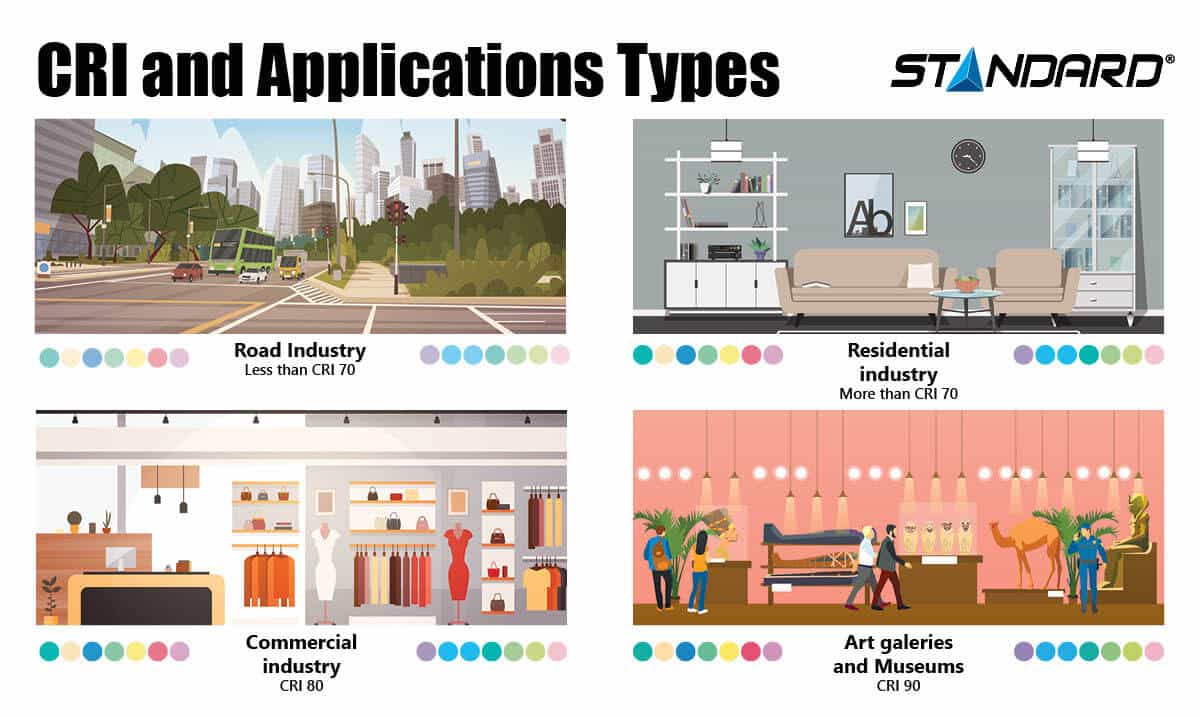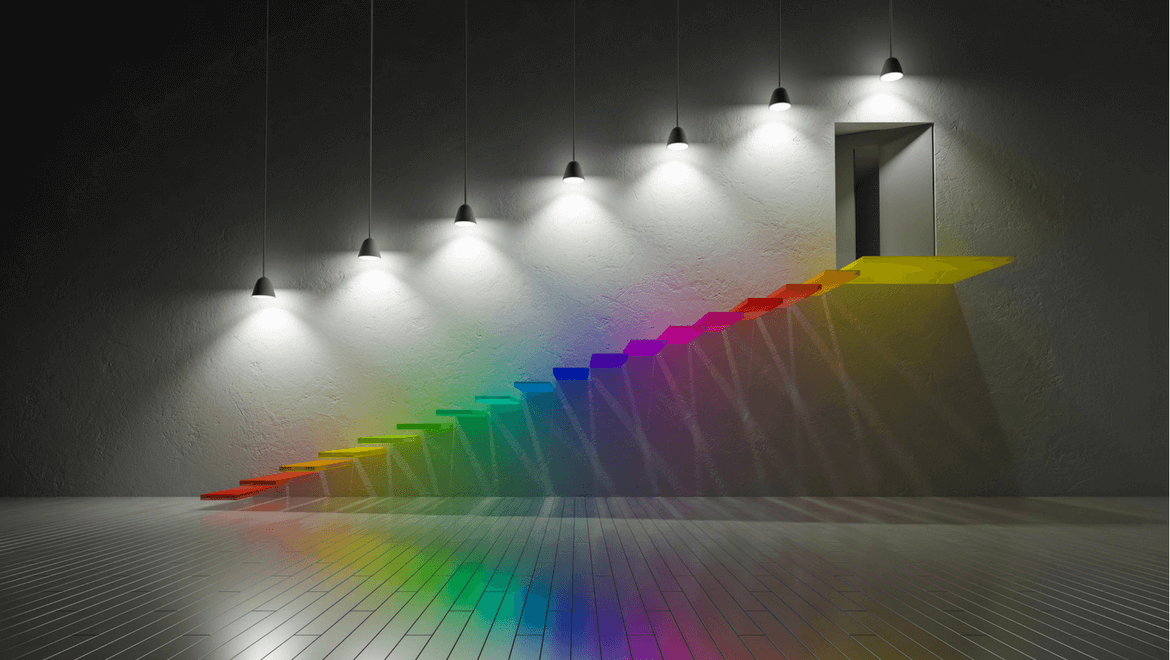Several factors need to be taken into account when selecting the optimal lighting system for a given space. The Colour Rendering Index (CRI) is one of these factors. We have assembled this short guide that defines the CRI as well as the best way to select a lighting system according to this value.
Definition of CRI
It should be noted that all light sources display a specific light spectrum. When we examine our environment, the colours we perceive are based on this spectral distribution. The Colour Rendering Index (CRI) is a measure of a light source’s ability to show object colours realistically or naturally. In other words, to accurately render all frequencies of its colour spectrum when compared to a perfect reference light of a similar type. The ideal reference light is daylight, as this is the light source that shows colours in their most natural and precise form. The CRI is rated on a scale from 0 to 100, the latter corresponding to daylight or a white light defined as “ideal”, based on a black backdrop. The minimum index is consistent with a light whose colours are indistinct.Diverse Light Sources
Accordingly, each type of lamp is able to render colours.CRI Between 0 and 70
We need to keep in mind that light sources that have a colour rendering index below 70 alter our colour perception. Light sources under this index category include:- Fluorescent tubes, also known as industrial white tubes
- Low pressure sodium vapor luminaires
- High pressure sodium vapor luminaires (with the exception of white luminaires)
- Mercury-based clear luminaires
CRI Between 70 and 90
These light sources display colours satisfactorily. Some of these are:- Standard LED lights
- Several fluorescent tubes
- A number of metal halide luminaires
- High pressure sodium vapor luminaires
CRI Between 90 and 100
Light sources whose CRI is greater than 90 display colours more distinctly and reveal the entire spectrum of colour shades. Among them, we find:- High fidelity LED lamps
- A number of metal halide luminaires
- Incandescent lamps (your basic light bulb and halogens)
Applications
So, how do we go about selecting our lighting system CRI? It will vary according to the applications and the respective needs in each scenario.- On highways, we can easily install lighting systems that have a CRI below 70 as it is not essential to distinguish colours accurately
- In residential and office applications, it is always better to select a lighting system that has a CRI greater than 70.
- A CRI greater than 80 is recommended for an application where precision work is conducted, for example in retail stores and boutiques.
- When the space requires lighting of exceptional quality, such as in art galleries or medical facilities, it is best to use luminaires that reproduce the colour spectrum as faithfully as possible; in these case, the CRI would be greater than 90.
 In conclusion, the Colour Rendering Index is a rating that specifies the quality of a light source and impacts the way in which we distinguish colours in our environment.
In conclusion, the Colour Rendering Index is a rating that specifies the quality of a light source and impacts the way in which we distinguish colours in our environment.
